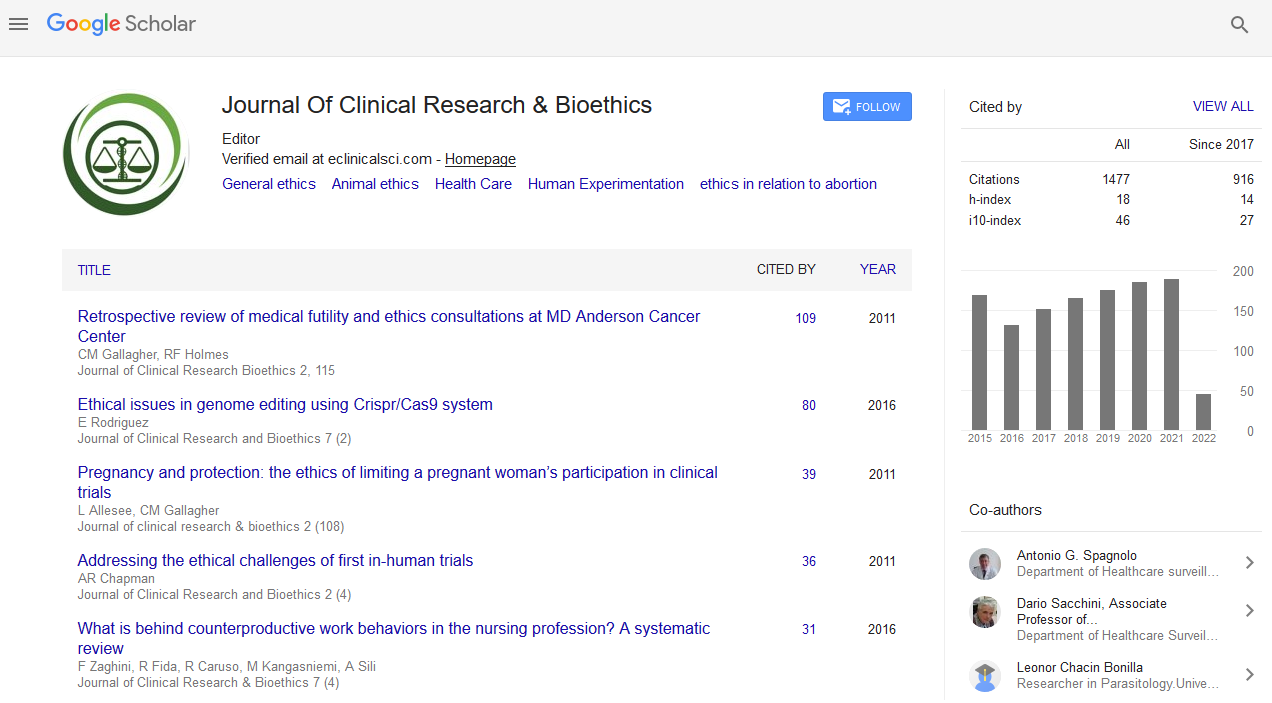PMC/PubMed Indexed Articles
Indexed In
- Open J Gate
- Genamics JournalSeek
- JournalTOCs
- RefSeek
- Hamdard University
- EBSCO A-Z
- OCLC- WorldCat
- Publons
- Geneva Foundation for Medical Education and Research
- Google Scholar
Useful Links
Share This Page
Journal Flyer

Open Access Journals
- Agri and Aquaculture
- Biochemistry
- Bioinformatics & Systems Biology
- Business & Management
- Chemistry
- Clinical Sciences
- Engineering
- Food & Nutrition
- General Science
- Genetics & Molecular Biology
- Immunology & Microbiology
- Medical Sciences
- Neuroscience & Psychology
- Nursing & Health Care
- Pharmaceutical Sciences
Abstract
Recognizing Criminal Behavior (Filicide) of Persons Diagnosed with Mental Illness: An Analysis on the Intentionality and a Philosophical Disclosure on Ethics and Morality
In this article, two case examples of criminal behavior in the USA are analyzed. There is a discussion on intentionality. A brief introduction to Filicide is made. Note that in respects, the impressions of trials forecasted by the media have great influence, fortifying public impression of the law rather than communication with the legal system per se. A disclosure on philosophical basis, together with Kant's theories, is provided. Because Kant passed away before the notion of intentionality was introduced, what is new in this article to add in knowledge is to correlate Kant’s theories with these two perpetrators’ behavior. A reflection with a practical application of Kant's theories constitutes the core component of theory in this article. The reflection includes analyses of our own lives in order to re-assess our attitude in dealing with each other and with youngsters.
The potential for criminality should be identified early in patient care. A prompt detection should be enacted to identify the potential for criminal violence. Appropriate staffing and protective measure should be enacted. A thoughtful team approach by both medical practitioners and their institutions, involving clinicians, non-clinicians, philosophers and scientists should be pursued. The conclusion stresses the importance of an early identification of a person diagnosed with mental illness who has also committed crime or crimes. Such an identification should be preceded by a well thought out crisis-recognition-process, appropriate staffing and secured protective measures.


